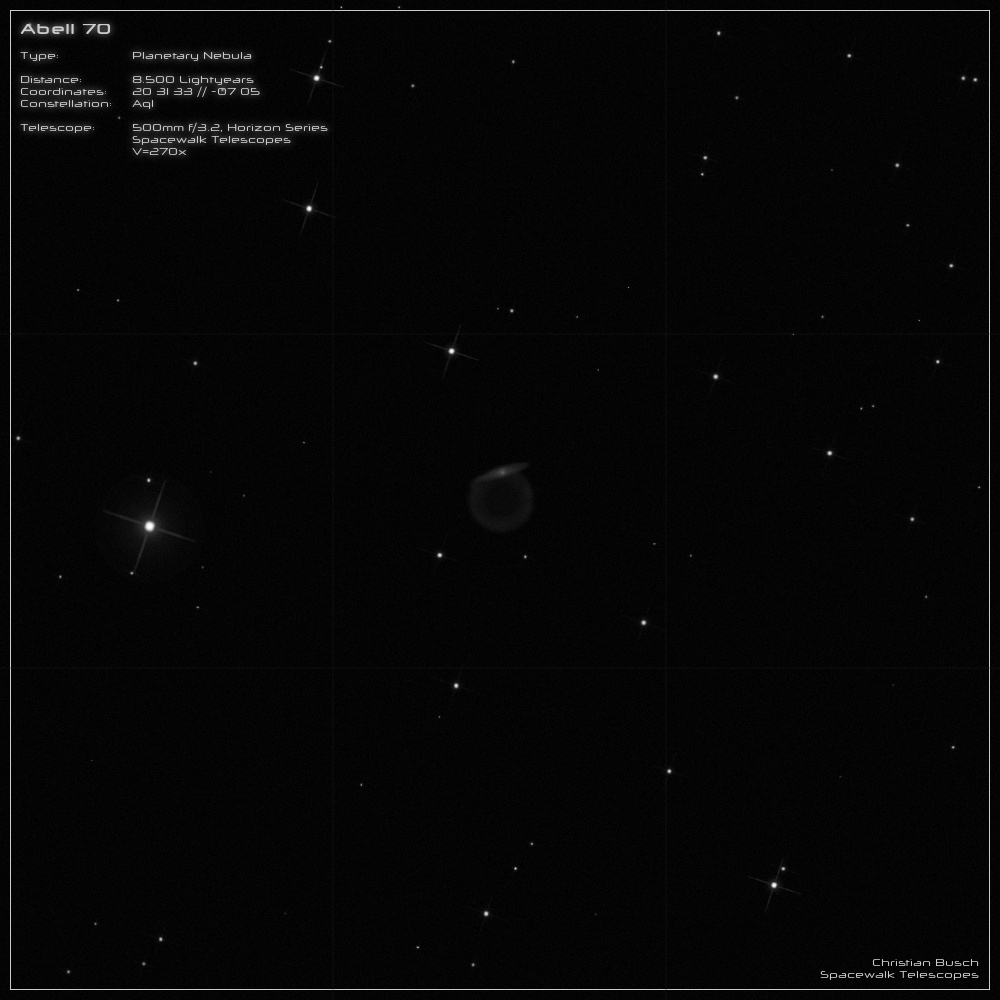Abell 70 - Planetary Nebula
Abell 70 is located in the constellation Eagle at a distance of 8,500 light years. This distance was measured with the satellite "GAIA", which
determined the parallax of the central star to 0.39mas, but with a very large error of +-0.16mas. So at the moment there is still a lot of room
for the correct distance, but this can surely be narrowed down with further GAIA releases.
The brightness of Abell 70 is given with 14.5mag, the apparent diameter with 40 arcseconds.
With the known distance the true size of the PN can be determined to 1.65 lightyears. Since the ring expands with a speed of 38...40 kilometers
per second into space, an age of about 12,000 years is calculated. So it will take only a few more millennia for the nebula to fade away. In the
nebular envelope, both red components (hydrogen) and blue components (excited oxygen) are visible. Furthermore, nodes with low ionization
can be found.
Normally there is a hot white dwarf (WD) in the center of a PN with temperatures up to 180,000 Kelvin. But the central star in Abell 70 belongs
to the group of barium stars, of which there are not many. Barium stars are characterized by a very high concentration of carbon and other heavy
elements, which are formed in the so-called s-process. Since so far all barium stars are found in close binary systems, it is assumed that such a
star was "polluted" by its partner when the latter expanded in the red giant phase. Thereby the heavy elements were transferred to the barium star.
The central star in Abell 70 is also a binary system consisting of a G8 star and a white dwarf. Both together have a combined apparent magnitude
of 18.6mag and are therefore invisible in the telescope.
Another special feature of this planetary nebula is that a galaxy of nearly the same size (PGC 187663) shines through the nebular envelope,
giving the PN a diamond ring effect. The galaxy lies about 260 million light-years away, which is 30,000x as far away as Abell 70, and every
second it moves another 5,880 kilometers away from us. The apparent brightness of the galaxy is given with 13.3mag, the extent with 1.1x0.3
arcminutes.
----------------------------------------------------------------------------------------------------------------------------------------------
In the 20" telescope Abell 70 appears faint, but can be observed quite easily at 270x in combination with an OIII filter. You can see a broad ring
with a dark center. Otherwise no structures are visible.
The galaxy appears slightly brighter than the planetary nebula. It protrudes beyond the ring on the northwestern side. The center of the galaxy is
quite bright and if you look closely you can see a faint stellar nucleus there.

